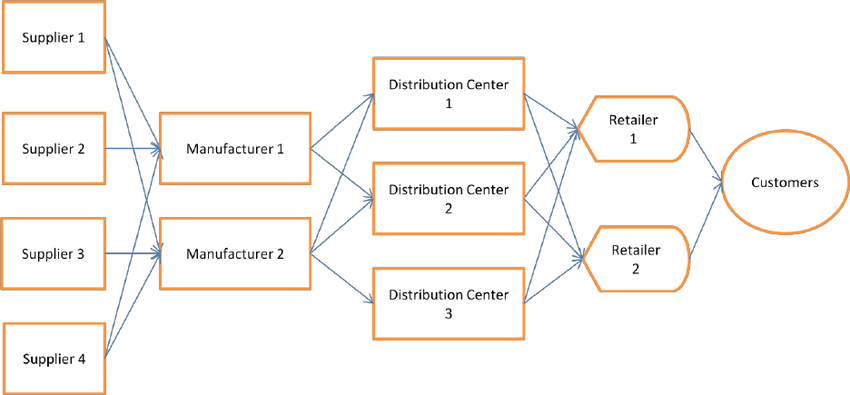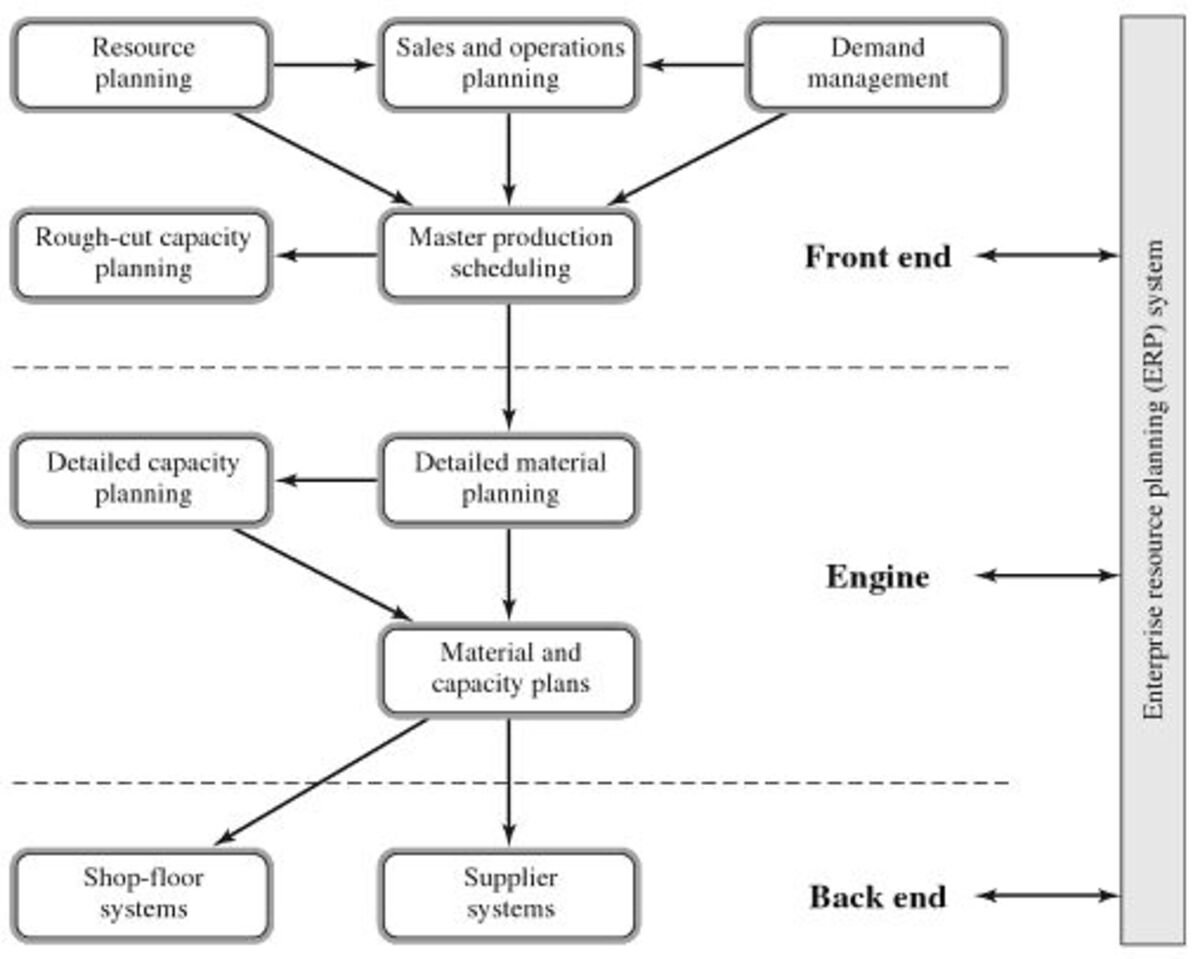HIGHLIGHTS
- There is no optimization without measurement, so the quantitative supply chain is closely related to the measurements.
- Supply chain management relates to production planning, transportation, and product storage. Some of the decisions and quantitative analysis factors can be mentioned (include but not limit): manufacture, transportation, warehouse management, inventory management.
FULL ARTICLE
What is quantitative?
The phrase “quantitative” or “qualitative” are two research methods, which are often used or mentioned in scientific research (including natural sciences and social sciences). Quantitative research means the systematic empirical investigation of observable phenomena through statistics, mathematics, or computer engineering. The goal of quantitative research is to develop and use mathematical models, theories, or hypotheses related to phenomena. This is the concept that runs through this article.

Supply chains are built from models, or the business itself. As a salient example, any investor entering the market with the goal of seeking and maximizing profit, considered the result of the equation that every economics freshman knows by heart:
Profit = Revenue – Cost
How to maximize profits? Is it better to increase revenue or reduce costs? That is a simple example of quantification.
Quantitative research is usually carried out using scientific methods, which may include:
- Models, theories and hypotheses
- The development of measuring tools and methods
- Testing and manipulation of variables
- Collect experimental data
- Modeling and analyzing data
Is quantitative really necessary for supply chain management?
There is no optimization without measurement, so the quantitative supply chain is closely related to the measurements. We’re going to take a tour of the supply chain to see what quantitative can do.
Starting from the background, we know that the supply chain includes many subjects and different management tasks as supplier, production, distribution system, sales, etc. Some tasks can be mentioned: demand forecasting, inventory management, operations, delivery, etc.

That’s an example of a simple supply chain, but most supply chains are networks. A manufacturing unit can have hundreds of suppliers, distributors, retailers, and customers (as Apple as of 2020 has more than 200 top suppliers and hundreds of other sub-suppliers). The customer of one supply chain is the supplier of the other. That partially explains how global supply chains are created or why the world economy is so closely interconnected. There are billions of supply chain decisions made every day and a small decision is also a component of the final result to reach the point: Whether supply chain is optimized or not?

Quantitative supply chain optimization is a broad view of the supply chain that aims to make the most of human intelligence and the modern computing resources. It is not a final solution but a complementary approach to improving the situation.
Quantitative aspects of the supply chain
Supply chain management relates to production planning, transportation, and product storage. Some of the decisions and quantitative analysis factors can be mentioned (include but not limit):
Manufacture
Supply chain planners need to decide factory placement, factory quantity, production methods, product quantities,v.v.
The first decision on location, strategically important but also extremely expensive, must be made with reasonable consideration between the distance of the factory to suppliers and customers, the labor costs, macroeconomic policy, its advantages and risks at the factory site,etc. To take it simple, location is the decision to make, cost optimization is the result, and the variables in the model are: labor cost, economic policy, distance to the target market and the supplier,etc.
Decisions about product operations are supported by Demand Management & Forecasting, Sales & Operation Planning (S&OP), and Master Production Scheduling (MPS), Material Requirement Planning (MRP). These are seen as spreadsheets that connect data in the supply chain. For instance, in the S&OP plan, optimizing production costs is expressed through a series of constraints on workers, labor time, quantity of products, machine capacity, etc.

Transportation
Transportation costs, which make up a significant portion of the supply chain, can be minimized by shortening the product moving distance through the optimal routing system.
Vehicle Routing
The shipping plan is designed to optimize both time and cost, to complete the order with the best quality. Carriers use technology that allows optimal arrangement of goods in a transport vehicle (truck, plane, etc). It will not be too complicated with FTL (Full Truck Load) and carriers have FTL orders for the two-way transport. However, this situation rarely happens. Small orders and goods consolidation is rather the common one with carriers, this makes taking advantage of two-way driving a dilemma for businesses. Nevertheless, on the bright side, this dilemma promotes the idea of shipping exchanges or empty container exchanges, which use algorithms to connect and optimize the shipping process.

Mode of transport
Each mode of transport has a different level of speed and flexibility. The higher the speed and the more flexibility required, the higher the shipping costs. It is important for businesses to find out which option will bring the best efficiency in terms of time, safety and specially cost.

Warehouse management
Location and number of facilities
It is important to strike a balance between cost and customer service. Additional storage locations often increase both costs and customer service. Depending on the strategy of the business, this factor will be determined.
Layout in stock
Depending on the business purpose, the enterprise chooses the warehouse design to suit and optimize the queuing. A storage location is not necessarily a warehouse, which may include:
- Vendor storage
- Store at retail store
- Store at distribution center
- Store at local warehouses
- Crossdock activities
Inventory management
Enterprises need to determine the quantity of goods to meet the needs of customers in each certain period. They must make a trade-off between cost and service level. The more inventory you keep, the higher the service level. However, a lot of stock means high storage costs and higher chance of that product becoming obsolete, damaged, etc.

Mathematical formulas and statistical probabilities are applied to precisely determine the required stock level and the optimal order quantity.
The basis for a better approach to supply chain management
To understand the big picture or perform well in an area of the supply chain, some of the foundation subjects outlined below can provide a solid base for beginners to approach. The system includes:
- Database Administrator
- Probability statistics
- Regression
- Optimization
- Algorithms
At the very first steps, in the aspect of supply chain management, deep study is not yet necessary, but grasping a certain amount of knowledge is essential since it helps process information and facilitates application into practice.
Along with the development of society and the rise of Big data, the supply chain cannot be out of the game.
Nhat Huyen
FURTHER READING
Electronic Data Interchange EDI: Solutions for the retail industry













